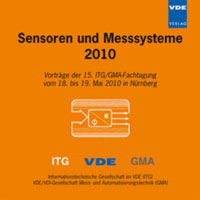Characterisation of Sensitive Layers for Molecule Detection with Acoustic Devices
Conference: Sensoren und Messsysteme 2010 - 15. ITG/GMA-Fachtagung
05/18/2010 - 05/19/2010 at Nürnberg
Proceedings: Sensoren und Messsysteme 2010
Pages: 5Language: englishTyp: PDF
Personal VDE Members are entitled to a 10% discount on this title
Authors:
Ayala, V. Carolina; Reindl, Leonhard M. (Laboratory for Electrical Instrumentation, Department of Microsystems Engineering (IMTEK), University of Freiburg, Germany)
Moosmann, Katrin; Rühe, Jürgen (Laboratory for Chemistry and Physics of Interfaces, Department of Microsystems Engineering (IMTEK), University of Freiburg, Germany)
Abstract:
Portable microacoustic sensors capable of detection on the molecular level have recently become of increasing interest for devices working with small volumes in chemical applications. For the detection of small masses (10-10 g) microacoustic wave devices can be used. To detect specific molecules, a sensitive layer for selective binding is attached to the piezoelectric material. Materials such as langasite (0deg, 138.5deg, 26.6deg cut, LGS) with zero temperature coefficient delay (TCD) can be used, since they can stimulate surface acoustic waves (SAW). The zero TCD allows high precision measurements using sensitive layers even without temperature compensation. A sensitive layer for the detection of cis-diols, such as sugars or neurotransmitters, has been realized by attaching a polymer layer to a LGS delay line. A change in the SAW velocity due to the presence of the polymer layer was detected. The 1st and 3rd harmonics are used for this purpose, because of their good signal strength. Moreover, the temperature dependence of the new velocity was determined achieving no influence of the polymer on the acoustic wave velocity. The polymer layer was successfully attached to LGS surfaces and has shown a long term chemical stability, making it adequate for future applications.


